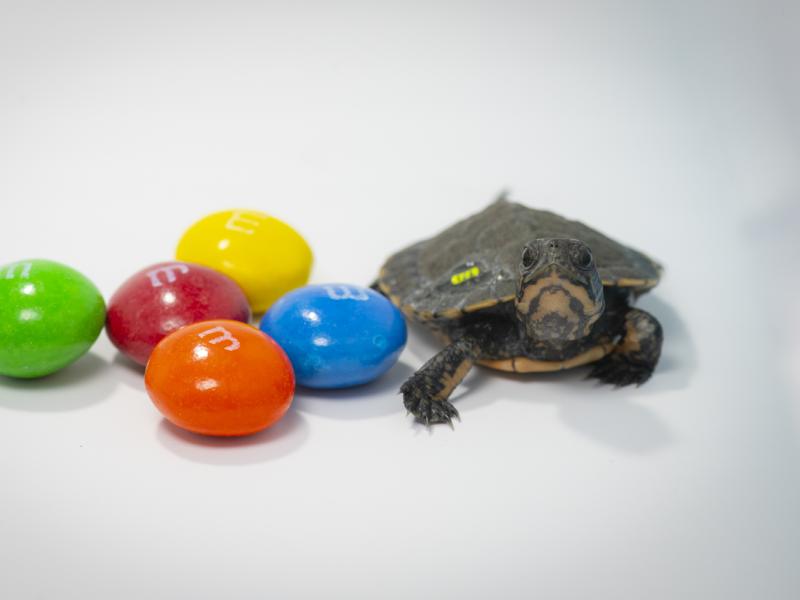
Mom and new arrival are doing well in private maternity den, according to keepers
What's cuter than a red panda? How about a baby red panda? Fluffy 4-year-old Mei Mei has given birth to a cub at the Oregon Zoo.
The new arrival entered the world June 18 and weighs about half a pound. Mom and baby are doing well in their behind-the-scenes maternity den, according to zoo animal-care staff.
"We're very happy for Mei Mei, and it's terrific to see her taking such good care of her baby," said animal curator Amy Cutting, who oversees the zoo's red panda area. "There's still a lot that could happen, so we're being cautious and giving her as much privacy as possible. So far she seems to be doing just fine."
Red panda cubs are born blind, their eyes opening after a few weeks, and they typically don't leave their maternity den for a few months after birth. Animal-care staff are taking a hands-off approach, monitoring Mei Mei and her cub via a surveillance camera to make sure all is going well.
"We'll be watching closely," Cutting said. "The first few weeks are especially important. Our staff is dedicated to giving Mei Mei everything she needs to be a successful mom. So far, she's doing great on her own, and the fact that she's successfully raised cubs in the past is encouraging."
Mei Mei and Moshu, the cub's father, are no strangers to the parenting game. The pair — who both came to Oregon in 2019 on a recommendation from the AZA's Species Survival Plan for red pandas — also produced two cubs at the Nashville Zoo in 2017.
Red pandas are considered an endangered species, with populations declining by about 50% in the past 20 years. While exact numbers are uncertain, some estimates indicate as few as 2,500 may be left in the wild. In addition to habitat loss and fragmentation, red pandas also face threats from poaching and the illegal wildlife trade.
Though they share part of their name with giant pandas, red pandas are in a class all by themselves: The sharp-toothed, ring-tailed omnivores are the only members of the Ailuridae family. Found in the montane forests of the Himalayas and major mountain ranges of southwestern China (Nepal, India, Bhutan, China and Myanmar), their striking red, white and black fur provides camouflage in the shadowed nooks of the trees amongst reddish moss and white lichens.
More News

Zoo welcomes 'very special group' of Pacific lamprey
Twenty five Pacific lamprey arrived at the zoo from nearby Willamette Falls.June 26, 2025

A leap forward: Endangered frogs hit survival milestone
For the first time, zoo-reared northern leopard frogs survived a winter in the wild at the Columbia National Wildlife Refuge.June 12, 2025

Tiny Endangered Turtle Hatchlings Arrive At Zoo
Seventeen northwestern pond turtle hatchlings, each about the size of a walnut, are making themshellves at home at the Oregon Zoo this summer.June 4, 2025

